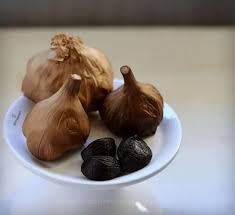JeevaSastram means the treatise speaks about the life of the living creature. Actually it is called Ayurveda, the name of the Indian medicine means that the Veda for (lengthening) the span of life which considered an Upanga (Subsidiary) to the Atharvaveda. The chief works on Indian ancient medicine have been described by J. Jolly, Medicine (Grudriss III, 10) that “in Medicine are included, through teaching on healings, what the Indians know about Botany, Minerelogy, and Chemistry (Alchemy)”.
The science of medicine is also called
VaidyaSastram. According to tradition
this JeevaSastram through the book SusrutaSamhita of the saint and physician Susruta
originally consisted of
तस्यायुर्वेदस्याङ्गान्यष्टौ तद्यथा कायचिकित्सा, शालाक्यं, शल्यापहर्तृकं,
विषगरवैरोधिकप्रशमनं, भूतविद्या, कौमारभृत्यकं रसायनं वाजीकरणमिति॥ (IV.34)
Ashtaanga=eight parts, in which Salya=major
surgery, Saalaakya=minor surgery (E.N.T), Kaaaaya-Chikitsaa=treatment of
disease of the body, BhoothaVidyaa=demonology-teaching on diseases caused by
the demons (Psychology), KaumaraBruthyaa=healing of diseases of children(Paediatrics),
VishaGaraVairodhikaPrasamanam or AgadaTantra=Toxicology, Rasaayana=Elixir (Treatment
with Chemicals) and VaajeeKarana=Aphrodiasiaca.
Divine Origin
In the BrahmaVaivartaPuraana, the following
phrases suggest that
ऋग्यजुस्सामाथर्वाख्यान् दृष्ट्वा वेदान् प्रजापतिः। विचिन्त्य
तेषामर्थाञ्चैवायुर्वेदं चकार सः॥
कृत्वा तु पञ्चमं वेदं भास्कराय ददौ विभुः। स्वतन्त्रसंहितां तस्मात्
भास्करश्च चकार सः॥
Brahma is reported to have transmitted Ayurveda,
the fifth Veda, to Bhaskara, and then Bhaskara is mentioned to have compiled
and independent Samhitaa. Then one
after the other it went to Asvini-Devatas, Indra and it was transmitted by
these gods to the sages.
Blood Flow
According to BhelaSamhita, “हृदो रसो निस्सरति तस्मादेति च
सर्वशः। सिराभिर्हृदयं वैति तस्मात्तत्प्रभवाः सिराः॥”
(20.3)
Rasa i.e., blood flows from the heart and then
to all places. Through the veins it
again reaches the heart.
Botanical facts
SaanthiParva of MahaBharatam (184.13) says that
वल्ली वेष्टयते वृक्षं सर्वतश्चैव गच्छति। नाप्यदृष्टेश्च मार्गोऽस्ति तस्मात्
पश्यन्ति पादपाः॥
The creeper moves about the tree trunks,
covering it all around. There is no path
for thee one without sight. Hence
creeper can see. Moreover, trees can smell, have the sense of touch and even
hear.
Many aspects of plant life are yet to be studied
by modern science. These facts are
propounded by our fore-fathers ages before.
Some
of the Important works
1.
AthreyaSamhitha
2.
HaritaSamhita
3.
KaasyapaSamhita (VruddhaJeevakeeyam)
4.
Agnivesa’s CarakaSamhita
5.
BhelaSamhita
6. Works of Nagarjuna (Buddhist Philosopher)
(This Blog post is a part of Blogchatter's #BlogchatterA2Z)



























